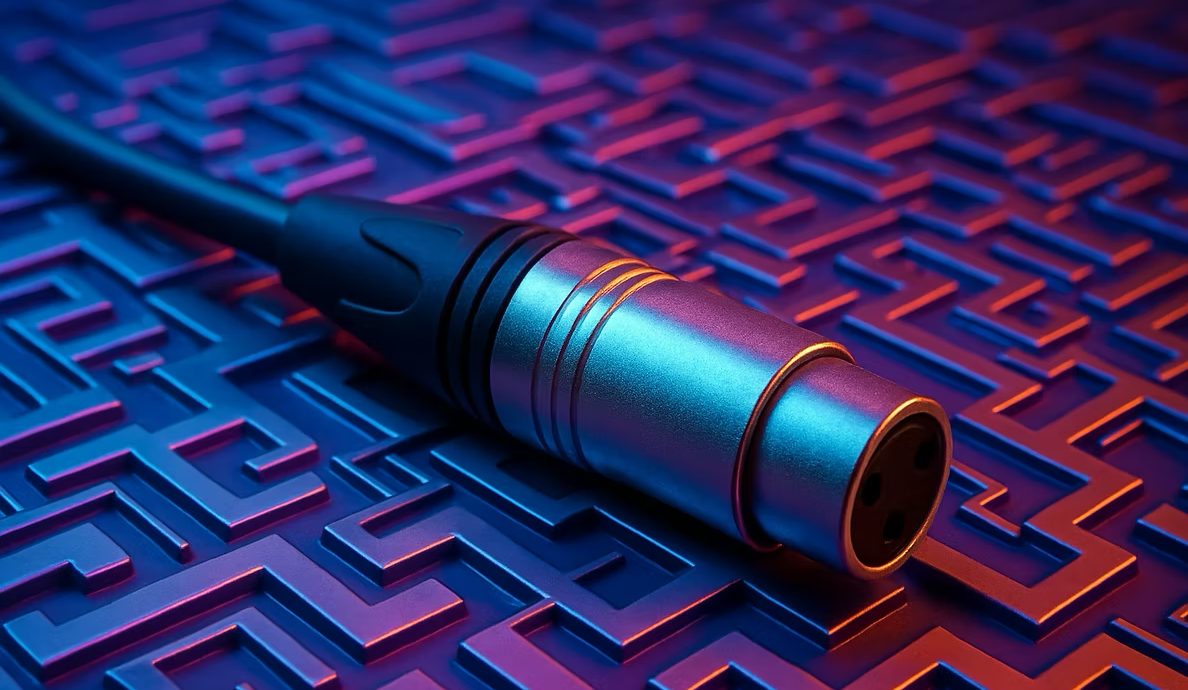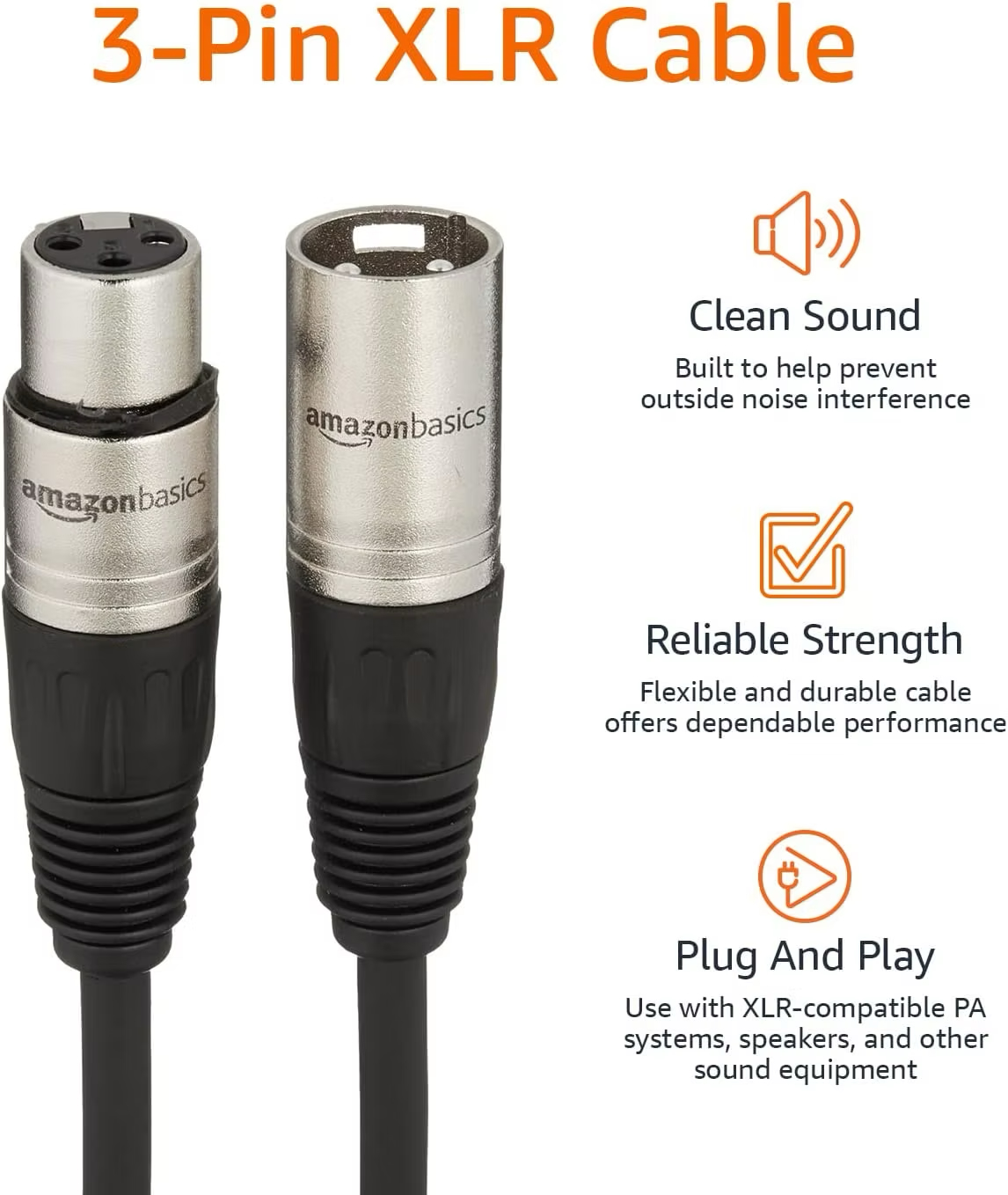XLR Microphone Cables:
Old School Reliability in a High-Tech World

By Frank Verderosa, 5/5/25
In a world where technology changes at lightning speed—where we’ve seen computer ports evolve from chunky rectangles to sleek, reversible connectors—there’s one piece of gear that has stayed almost exactly the same for decades: the humble XLR microphone cable.
We’ve all used them. Engineers. Podcasters. Voice actors. But what makes XLR cables so enduring? Let’s dig into their history, how they work, and why they’re still in use almost everywhere!
A Quick Trip Through XLR History
XLR cables have their roots in the 1950s, when James H. Cannon of Cannon Electric created the “Cannon X” connector. Over time, this evolved into what we now know as the XLR:
- – X for the original series
- – L for the latch that secures the connection
- – R for the resilient rubber used to insulate it
Originally built for military and industrial applications, these connectors quickly became a staple in the audio world due to their ruggedness and reliability. And despite 70+ years of tech innovation, the basic design of the XLR has hardly changed.
Why Have XLR Cables Remained Consistent?
Look at computer cables—USB-A, USB-B, Mini-USB, Micro-USB, USB-C. They’ve shrunk, sped up, and gotten sleeker. So why is the XLR still this chunky three-pin connector?
Simple: it already does its job extremely well.
The XLR cable is designed for balanced audio transmission, which means it’s much more resistant to noise and interference—something critical in live sound and studio recording environments. Its locking connector prevents accidental unplugging, and its robust design stands up to the abuse of touring, gigging, and session use.

But How Do They Work?
Inside every XLR cable are three conductors:
- – Pin 1: Ground (or shield)
- – Pin 2: Positive signal (hot)
- – Pin 3: Negative signal (cold)
This setup is what’s known as a balanced connection. Both the hot and cold wires carry the same audio signal—but one is inverted. At the receiving end, the cold signal is flipped back, and any noise picked up along the cable is canceled out.
That’s the secret to XLR’s clean, noise-free audio, even over long distances.
From Society of Voice Arts and Scences
Article continues…
How does Phantom Power factor in?
I’ve previously written in detail about 48v phantom power. If you’re using a condenser microphone, it likely needs external power to operate. That’s where phantom power comes in—usually 48 volts supplied through the XLR cable from a mixer, audio interface, or preamp.
Here’s how it works:
- – 48V is sent equally across pins 2 and 3 (relative to ground on pin 1)
- – Because both signal wires carry the same voltage, it doesn’t interfere with the audio
Important tip: Most dynamic microphones ignore phantom power. However, some ribbon mics (especially vintage ones) can be damaged by it, so always double-check your mic’s specs. This won’t be an issue for most modern mics used in voice over.
They’re reliable- but not bullet-proof!
Even the toughest cables wear out eventually. Here are a few common failure points, usually due to mishandling, age and other factors:
- 1. Broken solder joints: Repeated bending or tugging can cause the wires at the connector to break.
- 2. Frayed or shorted wires: Improper coiling or crushing can damage the cable’s inner conductors.
- 3. Corroded contacts: Dust, moisture, and time can lead to oxidation on the pins, causing crackling or dropouts.
- 4. Loose connectors: Low-quality or well-worn plugs can lose their snug fit, causing unreliable connections.
Proper Handling and Storage Tips
Want your XLR cables to last? A little care goes a long way:
- 1. Coil properly: Use the “over-under” method to avoid twists and stress.
- 2. Avoid tight bends: Don’t kink or sharply fold the cable.
- 3. Use Velcro ties: Keep coils neat without damaging the cable.
- 4. Keep them dry and clean: Store in a dry environment to avoid corrosion.
- 5. Label your cables: This helps with organization and prevents unnecessary handling.
- 6. Test them regularly: A simple cable tester can help catch problems early.
Final Thoughts
The XLR cable might not be flashy or futuristic, but it’s still one of the most reliable and essential tools in audio. While computer tech keeps shrinking and speeding up, the XLR stays the same—because it already perfected its job decades ago.
So the next time you plug in a microphone, take a second to appreciate that sturdy, locking connector. It’s been carrying sound across stages, studios, and broadcasts for over 70 years—and it’s not going anywhere anytime soon. ♦︎♦︎♦︎
















Add Comment